- Description
- Features& Advantages
- Mechanical Dimensions
- Electrical Data
- Mechanical Data
- Attenuation at Any Frequency
- Reviews 0
LCF series cables are UHF series economical radio frequency cables, which increase the cable attenuation with less floating and greatly reduce the cable cost. It is woven with low-density PTFE medium, aluminum foil longitudinally wrapped, and silver-plated wire. This series of products are widely used in electronic countermeasures, military electronic equipment, and other applications;
Attenuation vs. Frequency dB/100m
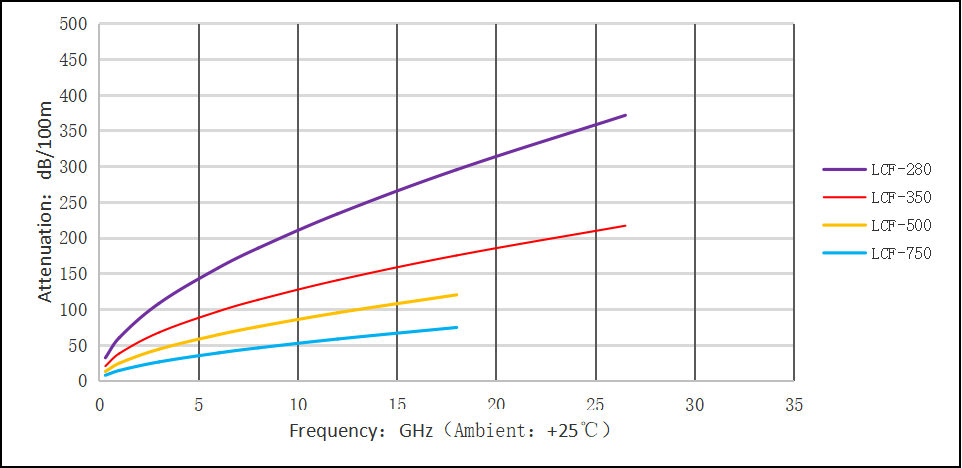
Power Handling vs. Frequency (Maximum)
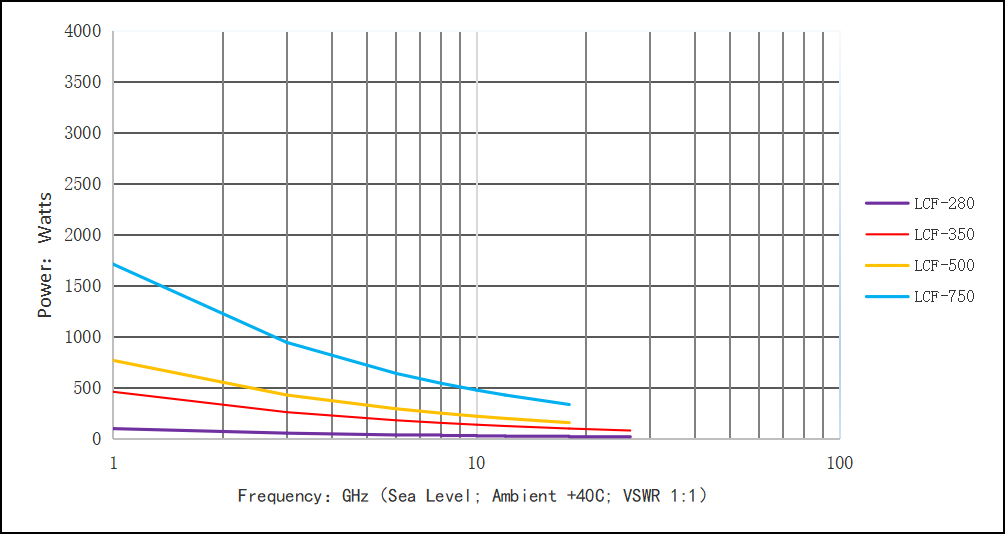
Phase Stability (Detection method: one rotation along the repeated bending radius)
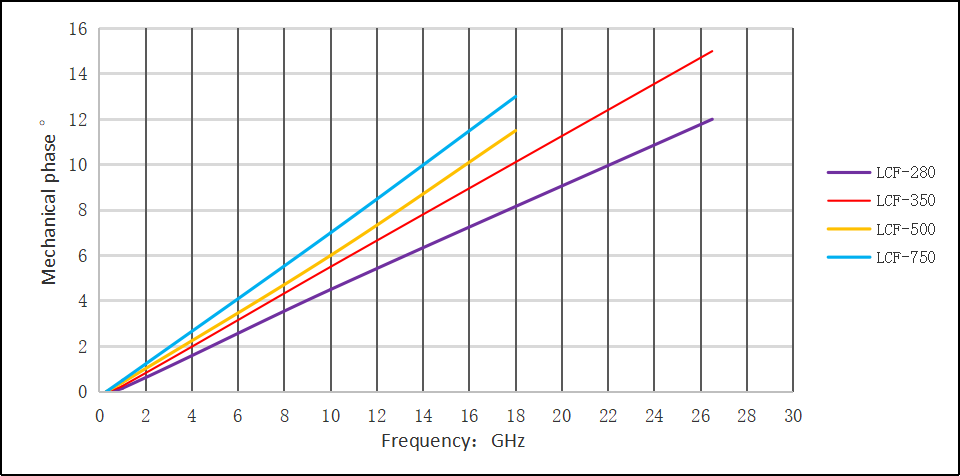
Amplitude Stability (Detection method: one rotation along the repeated bending radius)
Phase Change vs Temperature (PPM)
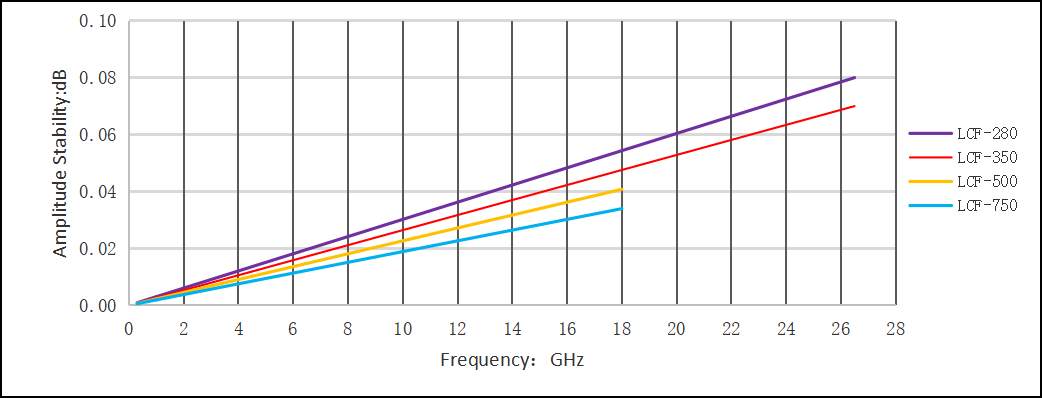
Features& Advantages
- Good amplitude stability
- Good price/performance ratio
- High shielding efficiency
- Maximum operating frequency DC-26.5GHz
Mechanical Dimensions
| Cable Model | LCF-280 | Material |
|
Center Conductor |
0.56 |
Silver Plated Copper |
| 0.0220 | ||
|
Dielectric |
1.60 |
Microporus PTFE |
| 0.063 | ||
|
Inner shield |
1.70 |
Al Tape |
| 0.067 | ||
|
Outer Braid |
2.05 |
Silver Plated Copper Braid |
| 0.081 | ||
|
Jacket |
2.60 |
FEP |
| 0.102 |
Electrical Data
| Cable Model | Impedance | Vp (%) | Shielding efficiency | Permittivity | Delay | Capacitance | Voltage Withstand | Peak power | Cut-off Frequency |
|
LCF-280 |
50Ω |
76% |
>90dB |
1.73 |
4.39nS/m | 87.7pF/m |
500 DC |
0.8KW |
60GHz |
| 1.34nS/Ft | 26.7pF/Ft |
Mechanical Data
| Cable Model | Bend Radius: installation | Bend Radius: repeated | Weight | Temp, Operating & installation | |||
| LCF-280 |
15 |
mm | 30 | mm | 17.5 | g/m | -55 +125℃ |
| 0.591 | in | 1.181 | in | 0.012 | Ibs/ft |
-67 +257℉ |
|
Attenuation at Any Frequency
| Frequency (MHz) | 300 | 1000 | 3000 | 6000 | 8000 | 10000 | 12000 | 18000 | 26500 | 40000 | K1 | K2 |
| LCF-280 | 32.54 | 60.66 | 108.60 | 158.49 | 186.00 | 210.90 | 233.95 | 295.74 | 371.84 | 一 | 1.8320000 | 0.0279500 |
Attenuation at Any Frequency = [ k1 x SQRT (Fmhz)] + [ k2 x Fmhz ]; dB per 100 meter



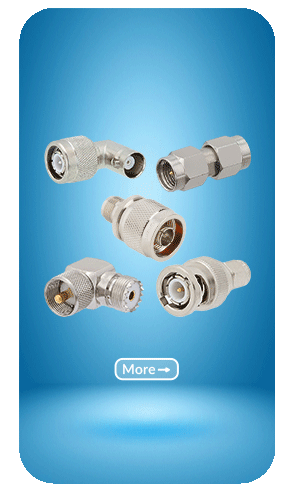
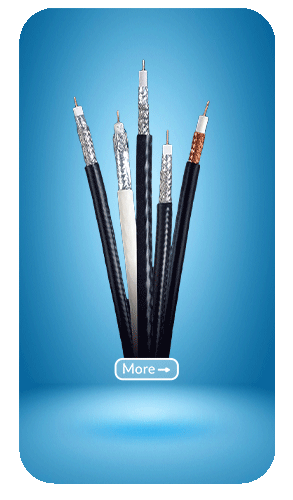

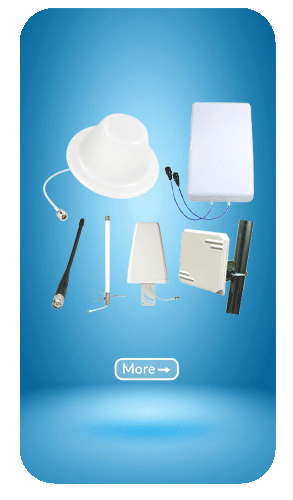
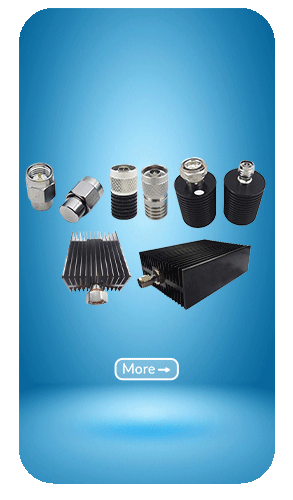
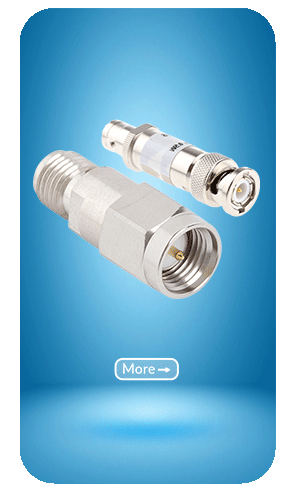
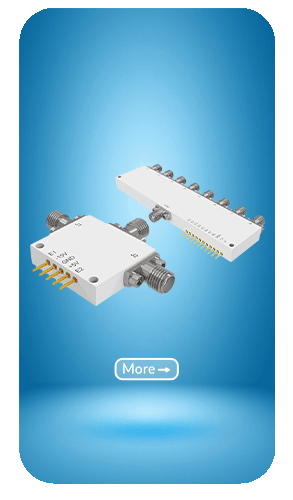

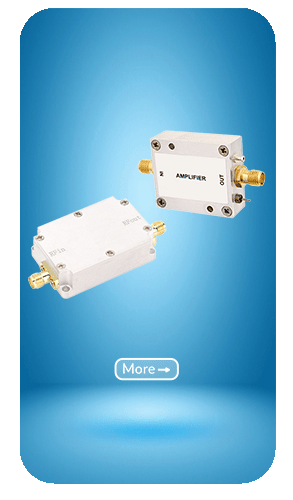
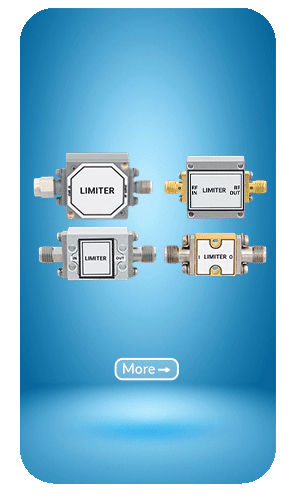
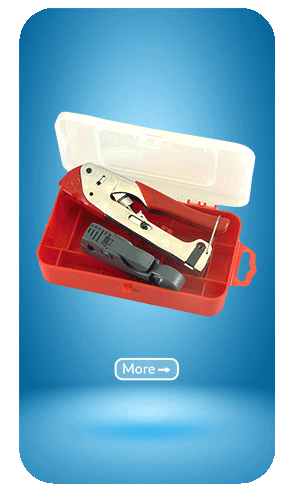









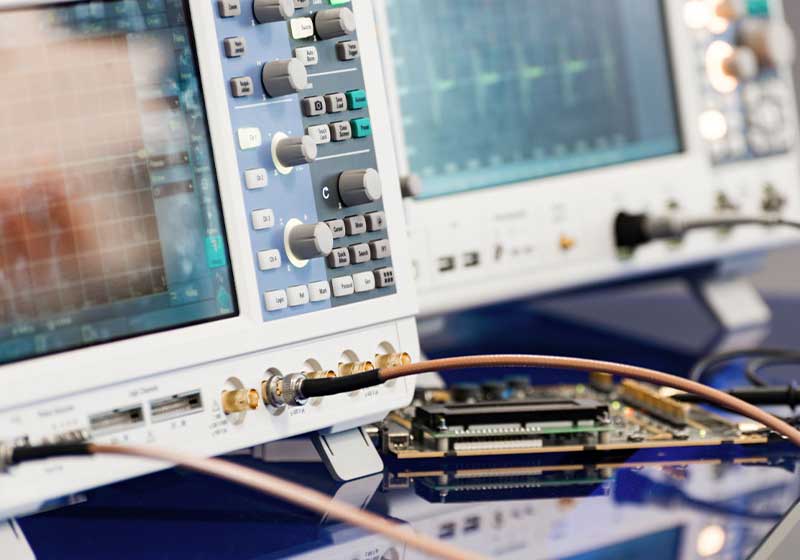
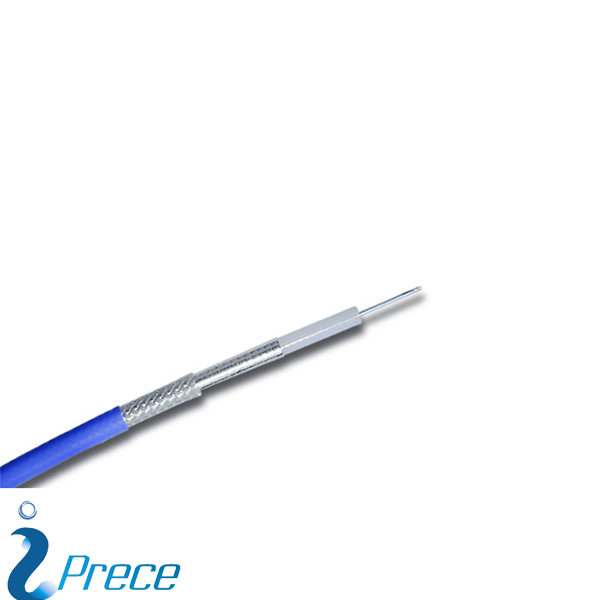
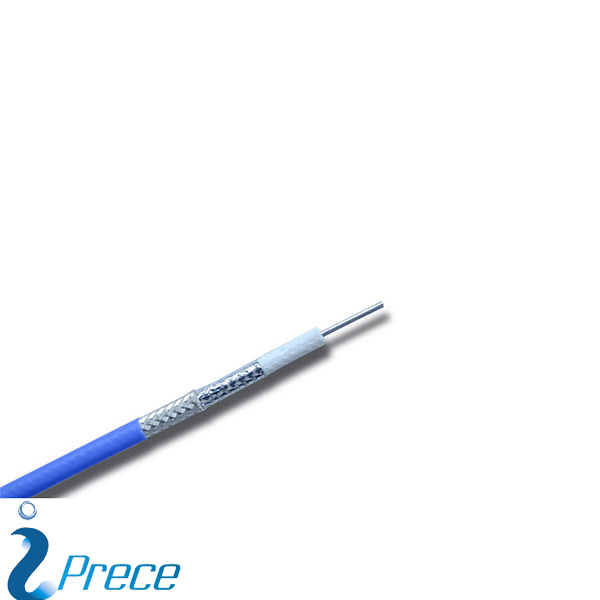

Reviews
There are no reviews yet.